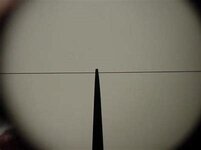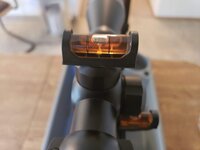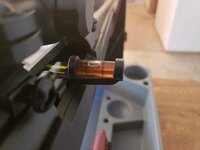- Messages
- 228
- Reactions
- 435
When mounting a new scope on a rifle or just adjusting one that came with it, is it enough to only gauge if the horizontal axis of your scope is aligned with the horizontal axis of your rifle using your eye? Or is a better precision method needed to avoid throwing off accuracy? It feels like no matter how much I play with it; its ever so slightly off.
The one I had included with my new Remington 700 ADL does not even appear to have the vertical crosshair aligned with the top turret but I would still like to know because I plan to replace the scope.
The one I had included with my new Remington 700 ADL does not even appear to have the vertical crosshair aligned with the top turret but I would still like to know because I plan to replace the scope.









 Rant time:
Rant time:







